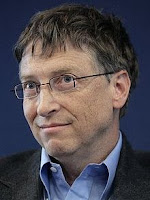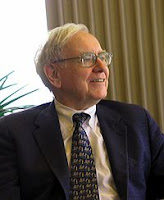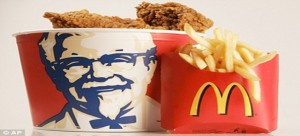As the biggest auto show in the world’s largest automobile market, Detroit’s North American International Auto Show's (NAIAS) importance cannot be overstated. Manufacturers bring only their best to Detroit, transforming the show floor into automotive nirvana for two weeks in January. As the home show for Detroit’s Big Three (Chrysler, Ford and GM), a strong showing here is all but guaranteed.
Continuing their shift away from oversize SUVs, the Big Three populated their 2011 booths with smartly engineered, “right-size” vehicles. High-tech, small-displacement engines and alternative powertrains ruled the NAIAS floor, showing that America is ready to take charge and innovate in an increasingly fuel-conscious market. Of course, the 2011 NAIAS showed that America still knows how to do big motors. To keep up with the shifting trends of American vehicles, here are the Top 10 American rides of the 2011 North American International Auto Show.
No.10 Chrysler 200 Super S
Chrysler debuted its Sebring replacement -- the 200 sedan -- at last year’s Los Angeles Auto Show. To keep interest up in the car -- and perhaps to distance the new car as far as possible from the unloved Sebring -- Chrysler unveiled a tuned version at the 2011 NAIAS. Built by Mopar and dubbed the 200 Super S, this sedan doesn’t look like a rental-ready embarrassment, though it does seem that its modifications are mostly cosmetic. Sprayed in two-tone tungsten on matte black, this SEMA-ready ride features a louvered hood, a revised grille and a Mopar-designed aero kit. The ride height has been dropped 3 inches, and the sedan now rides on 19-inch rolling stock. The result is a car that is rather attractive -- and maybe even attractive enough to make everyone forget about the Sebring.
No.9 Chrysler 300
Chrysler’s $1 billion investment in the redesign of its 2011 300 sedan has resulted in a sleeker car with a classic, more refined appearance. The bricklike styling was tossed in favor of a more conventional look, likely due to the fact that this car is slated to be sold as a Lancia in Europe. Bold, brash and defiantly American cars just don’t work over there, apparently.
Corners appear softer, the gun-slit side windows have been enlarged, the front windscreen leans back an extra Fat Joe-approved 3 inches, and the headlamps and Bentley-inspired chrome grille have been tossed in favor of more subtle pieces. The interior -- long the weakest part of any Chrysler product -- has been revamped and features materials that are actually pleasant to the touch and an 8.1-inch Uconnect infotainment system. No mention yet of an SRT version; the standard car will be powered by a 292-horsepower V6.
No.8 Buick Verano
Buick continues to crank out fresh, new product as it transforms from a stodgy brand for the geriatric set into a symbol of modern 21st-century luxury. Making its debut at the 2011 NAIAS was Buick’s smallest offering: the Verano. Riding atop the same platform as Chevrolet’s critically lauded Cruze, the Verano is GM’s compact, entry-level luxury sedan. With just a 177-horsepower, 2.4-liter inline four driving the front wheels, the Verano wasn’t designed to be a BMW-shaming screamer. Buick instead focused its efforts on creating a well-finished, hyperquiet ride. Still, it’s 8.0-second 0-60 time is respectable, and its estimated 31 highway mpg will surely be appreciated. Those with a need for more speed will want to hold out for the 2.0-liter turbocharged mill that will be available post-launch.
No.7 Chevrolet Sonic
Formerly known as the Spark, Chevrolet’s Sonic replaces the not-so-loved Aveo and has been designed to earn GM conquest sales in the highly competitive subcompact market. Pulling consumers away from loved nameplates like the Fit and Fiesta is tough, but GM is hoping to win buyers over by offering them more -- namely, more features and more power. Available features include remote start, heated front seats and OnStar. Power comes from a naturally aspirated 1.8-liter, 135-horsepower four banger. The turbocharged 1.4-liter, 138-horsepower motor from the Cruze -- mated only to a 6-speed manual -- is also an option. Corvette engineers were called upon to handle suspension-tuning duties, a fact that suggests the Sonic will be a rather fun car to drive. We’re holding out hope that the Sonic Z-Spec, which includes Brembo brakes, BBS wheels and Recaro seats, makes it out of the concept stage and becomes an actual production vehicle.
No.6 Ford C-MAX
A favorite in Europe, Ford’s Focus-based C-MAX people carrier is finally coming to America. The 2011 NAIAS featured the world’s first look at the next-generation C-MAX as well as a look at Ford’s first ever 1.6-liter turbocharged EcoBoost motor -- a powertrain option for the standard vehicle. Two additional versions of the C-MAX get some form of battery assist: the C-MAX Hybrid and the C-MAX Energi. Ford is keeping tight-lipped about the Hybrid, saying only that it is able to achieve 41 mpg -- a better number than that of the Fusion Hybrid. The C-MAX Energi is a plug-in version of the Hybrid, with a claimed range of 500 miles. Expect more information on these vehicles to come closer to the standard C-MAX’s release date later this year.
No.5 Tesla Model S
Though no longer new, Tesla brought out its Model S luxury sedan prototype back to Cobo Hall for the 2011 NAIAS. As nice as the sedan is, the production vehicle still doesn’t have a solid release date, and throngs of car fans and pundits still deride the vehicle as vaporware. To show the world that, yes, the car actually is still in development, taking center stage in Tesla’s booth was a deconstructed, preproduction Model S body-in-white. Opting to lets its aluminum frame do the talking, this beta chassis was left naked so as to show (or at least hint at) the vehicle’s final tooling, which, in turn, would hopefully send the message that a production version would be arriving shortly. The Model S is slated to be ready for sale by mid-2012 and will carry a base price of around $57,400.
No.4 Ford Focus Electric
Ford’s first purely electric vehicle -- the five-door Focus Electric -- is scheduled to hit showrooms in late 2011. Looking to improve upon the competition in more ways than just looks, Ford is claiming that its handsome all-electric Focus achieves a better mile-per-gallon equivalent than Chevrolet’s Volt and recharges more quickly than Nissan’s Leaf. Total range numbers have yet to be announced, but the torque-happy electric motor will briskly whisk the Focus Electric to a top speed of 84 mph. Ford’s Focus Electric also appeals to the gadget crowd, with technologies like SYNC connectivity, a MyFord Touch system unique to the battery-powered car and MyFord Mobile, which lets users pair their smartphones to the car to monitor vitals such as charge cycles and vehicle settings.
No.3 GMC Sierra All-Terrain HD
Looking more like Master Chief’s Warthog than a standard work truck, GMC’s Sierra All-Terrain HD concept is GM’s concept of a potential Raptor fighter. Rumored to be more or less production-ready, this four-wheel-drive truck boasts a wider-than-wide stance, an increased ride height, heavy-duty suspension components, and 35-inch BFGoodrich mud tires. Powering this beast is a 6.6-liter Duramax diesel V8 that churns out 397 horsepower and enough torque (765 lb-ft) to alter the Earth’s rotation. Expect the standard, non-mountain-jumping version of the Sierra to look similar to this truck -- minus the hard-core off-road gear, of course.
No.2 Ford Vertrek Concept
The kinetically styled crossover you see here is Ford’s Vertrek concept, rumored to be the replacement for the North American Escape and European Kuga. Built upon the same global C-segment platform as the Fiesta and C-MAX, this vehicle is made more for style than towing or off-road ability. The European chassis will likely give a production version of this CUV engaging driving dynamics, and the 1.6-liter EcoBoost four banger with Ford’s Auto Start-Stop technology should deliver ample performance and fuel savings. As the Vertrek is officially just a concept, Ford hasn’t bothered with listing any numbers as far as expected engine output, performance or fuel economy. Ford also hasn’t mentioned if or when a production version of the Vertrek will be released, and if it is released, whether it will be called the Vertrek or retain the Escape name.
No.1 Cadillac CTS-V Coupe SCCA Race Car
Few cars fill us with sheer desire the way Cadillac’s CTS-V Coupe SCCA Race Car does. Built with the singular purpose of dominating the Sports Car Club of America World Challenge GT racing series, this Caddy was built to go fast and look good while doing it. The first race of the season is still a couple of months away, and much like those “demonstration of concept” cars we see at SEMA, Cadillac and the builders are keeping mum as to the work that has gone into this race car (due either to secrecy or to the fact that the car may not be finished yet). We almost left this car off the list because of the fact that it will never be available to the public, but with the tarmac-hugging ride height, side-exit exhausts and NACA ducts galore, this Cadillac is hands down one of the coolest cars at the NAIAS, and is therefore more than deserving of a place on this list.






























